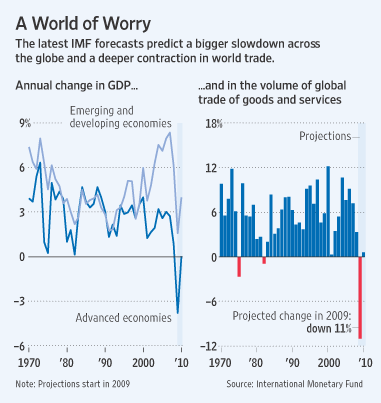Financial market experts say we are in the eye of the hurricane, heading toward the most significant financial crisis in history.
(Photo by Ussama Azam on Unsplash)
Economic crises, political scandals, and several other factors will become the trigger that will lead the financial market to its collapse. It may sound like a movie scene, but that’s what we should expect in the next few years about the world economy.
“The biggest crisis in the history of the world is coming. The biggest bubble in world history is getting bigger.” said Robert Kiyosaki, bestselling author Rich Dad Poor Dad and famous financial market investor.”
And he still says more.
“The biggest crash in the history of the world is coming. The good news is that the best time to get rich is during a crash. The bad news is that the next crisis will belong. So buy more gold, silver, and Bitcoin while you can. Take care.”
What can we learn from this?
Some investors believe that Bitcoin, along with silver and gold, can be considered “life-saving” assets in a scenario of extreme crisis in traditional markets. However, at present, we can see that these assets continue to devalue more and more, which shakes many novice investors’ emotions.
Is it possible that there is a crisis on a scale as large as this?
Yes, all the points indicate that sooner or later, the economy will collapse again and could cause the most significant financial crisis in history, putting society in a difficult time, making this the most significant crash ever.
Unfortunately, suppose we analyze all financial crises to date. In that case, we can see that they are more likely to be formed through human nature than through the particularities of the legal system.
We can try to prolong until the next time, taking this time to implement more robust measures, to implement more creative and innovative actions. To some extent, that has actually been done after this financial crisis. A lot of things have been done to try to heal the banking sector, to make it safer.
What would happen if there was another crisis?
As we look back on the 2008 crisis, we can see that it had its beginnings in the US banking sector. Still, in the end, it ended up triggering the deepest global recession since the Great Depression.
And in 2009, we felt firsthand the first record in which global GDP contracted in real terms. The loss of growth resulting from the crisis and recession that followed was estimated at more than US$10 trillion (which at the time was more than one-sixth of global GDP in 2008).

(Image by The Wall Street Journal)
The fact is that all over the world, governments and central banks have come together to seek together an alternative that could avoid a major crisis: rescue banks that have proven to be too big to fail; cut interest rates to almost zero; and pumping liquidity into the system with quantitative easing.
This was not a quick process. It took nearly a decade to implement before a credible return to growth in the US and Europe. According to The Guardian, the IMF warned that governments and regulators have failed to implement the necessary reforms to protect the system from somewhat reckless behavior. As a result, many economists already say we are approaching ripe conditions for another financial crisis, followed by a global recession.
The big concern here is that governments do not have the policy tools they had in 2008 to prevent a financial shock from turning into a free fall. As a result, overall, debt levels are much higher than during the previous crisis.
Do central banks have the independence they need to react effectively?
If you look at the last financial crisis, central banks surprised many policymakers with the degree of independence they have shown themselves to possess. After all, the central bank can issue its own debt — that’s what the Federal Reserve did — in much the same way that the government does. All major banks have issued massive debt to try to increase the money supply. They have given very short-term obligations to repurchase long-term debt.
I don’t believe that governments fully realized that they could do this. Unfortunately, many restrictions have been placed on central banks and their ability to respond creatively, especially in the United States. Whether those restrictions will be overturned, we don’t know. But central bank independence remains very strong around the world, despite these restrictions.
They have the independence they need, but they lack the tools. For example, I wish central banks could push interest rates into negative territory in a profound emergency, not in regular times, as a way of trying to stimulate the economy.
It would have been much more effective than quantitative easing, forward guidance. So these obscure things that they were doing had some effect. But, still, most studies show that the result was quite limited.
Final Thoughts
Society has a serious problem that needs to be fixed urgently, its slow adaptation to the new. However, I feel that we are not prepared to face another economic crisis like 2008.
I believe that there is still the possibility of something like this happening again, especially at this moment in which we live when the pandemic once again shook the public coffers and destabilized a market that was once solid.
However, according to the data shown, apparently, this much-feared crisis will still take a few years to occur. So the best thing to do now is to start creating an emergency reserve to provide for ourselves in such a desperate situation.
I really hope that you were able to absorb some information through this piece. The research shown here is entirely true, but nothing confirms whether this crisis will occur five years from now or tomorrow. I hope for your understanding.
Thanks for reading. Have a great day!